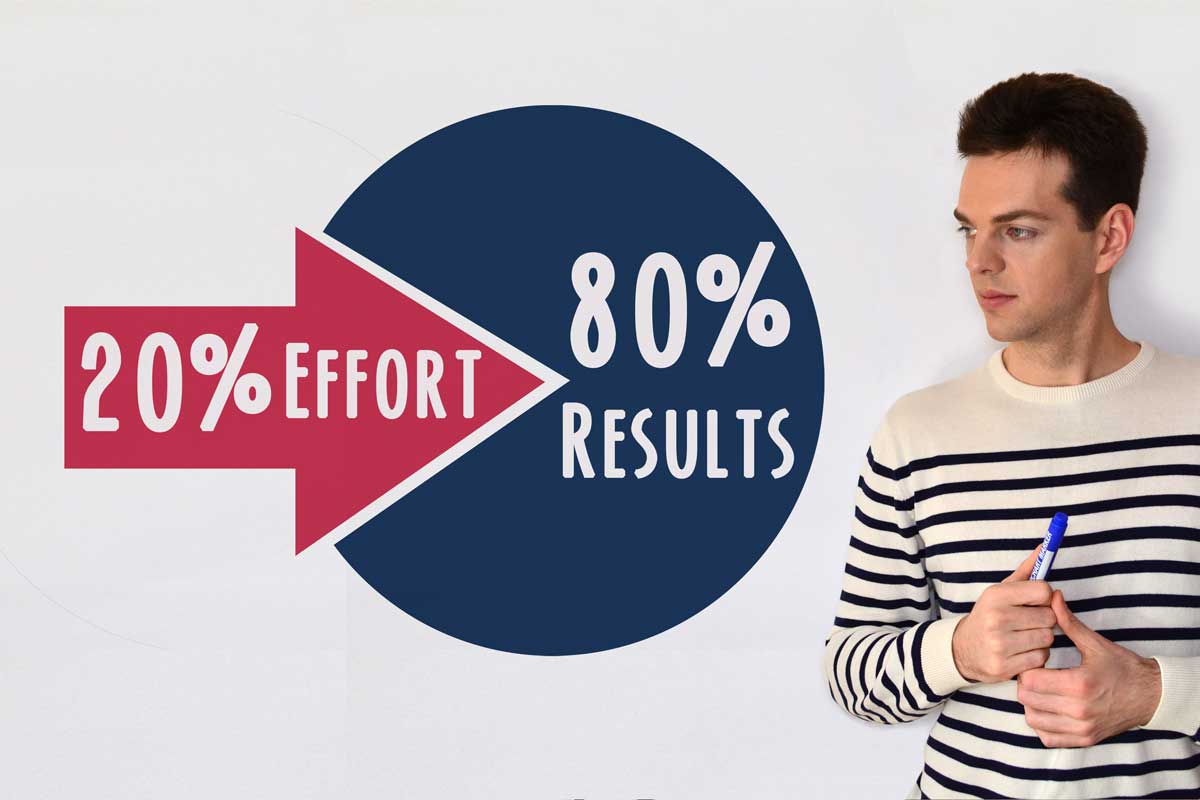As a business owner, as many lawyers are, you may have heard about the 80/20 principle, also known as the Pareto principle. This principle states that 80% of your results come from 20% of your efforts. In other words, a small portion of your actions generates the majority of your outcomes. Understanding and utilizing this principle can help you grow your law business more effectively.
Understanding the 80/20 Principle
The 80/20 principle was first articulated by Italian economist Vilfredo Pareto in the late 19th century. He noticed that 80% of the land in Italy was owned by 20% of the population. Over time, this observation has been applied to various fields, including business.
In business, the 80/20 principle can be used to identify the most critical 20% of your customers, products, or services that generate 80% of your revenue. By focusing your efforts on these vital few, you can optimize your resources and achieve better results.
In other words, as we’ve explained before, “When you can identify the 80% of things that make little or no difference in getting big results, then you can reallocate your effort, time, energy, and investment capital away from those things and redirect them toward the 20% of things that matter a lot.”
Applying the 80/20 Principle in Your Business
To use the 80/20 principle in your business, you need to follow these steps:
Step 1: Identify Your Key Metrics
The first step is to identify the key metrics that drive your business. These metrics could be revenue, profit, client acquisition, conversion rates, or any other relevant data point. Once you have identified your key metrics, you can use them to analyze your law business and identify the most important areas.
Step 2: Analyze Your Data
The next step is to analyze your data to identify the most critical 20%. For example, you may find that 20% of your clients generate 80% of your revenue or that 20% of your caseload generates 80% of your personal satisfaction. By identifying these critical areas, you can focus your resources and efforts on them.
Step 3: Optimize Your Resources
Once you have identified the critical 20%, you can optimize your resources to achieve better results. For example, you may want to focus your marketing efforts on your top 20% of client or caseload types. You may also want to streamline your operations to improve efficiency in these critical areas. This may involve finding other ways to manage the remaining 80% of the workload, such as outsourcing or automation.
Step 4: Monitor Your Results
Finally, you need to monitor your results and adjust your strategy as needed. By regularly reviewing your data and adjusting your approach, you can continually optimize your practice and achieve better results over time.
Examples of Using the 80/20 Principle in Business
Here are some examples of how you can use the 80/20 principle in your business:
Example 1: Client Acquisition
If you find that 20% of your clients generate 80% of your revenue, you can focus your acquisition efforts on this critical 20%. You can also identify the characteristics of these clients and use this information to target similar customers in your marketing campaigns.
Example 2: Case Type Optimization
If you find that 20% of your cases generate 80% of your profits, or generate 80% of your personal satisfaction, you can focus your efforts on optimizing these products. For example, if you find that representing accident victims is particularly rewarding, but that this isn’t the primary focus of your practice, you may want to make a shift.
Example 3: Time Management
If you find that 20% of your tasks generate 80% of your results, you can prioritize these tasks and delegate or outsource less critical tasks. This approach can help you manage your time more effectively and achieve better results.
And the best thing about the 80/20 principle is that it can apply across many aspects of your life–from business to relationships to investments.
To learn more about using the 80/20 principle in your law practice, sign up for our newsletter, read this incredible book, or contact us for more information.
